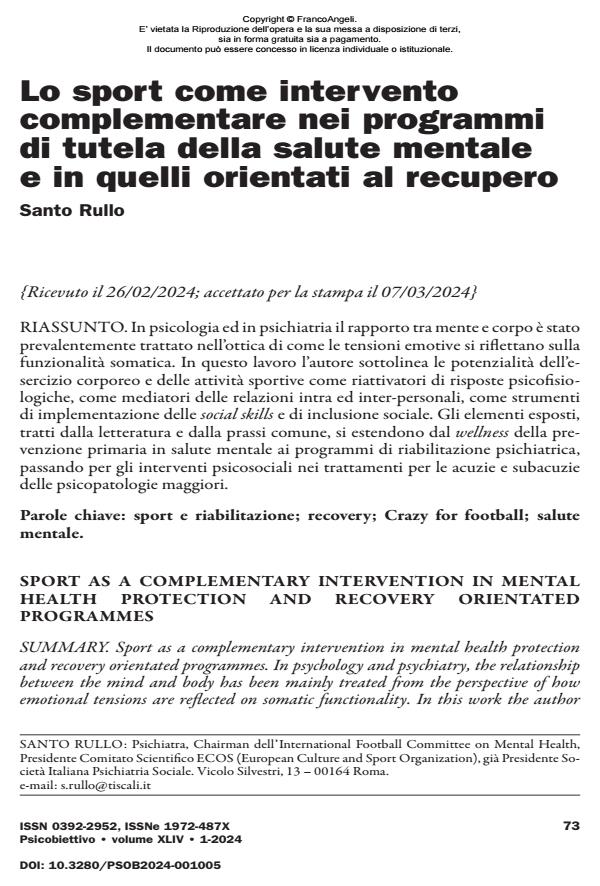Sport as a complementary intervention in mental health protection and RECOVERY ORIENTATED PROGRAMMES
Journal title PSICOBIETTIVO
Author/s Santo Rullo
Publishing Year 2024 Issue 2024/1
Language Italian Pages 13 P. 73-85 File size 141 KB
DOI 10.3280/PSOB2024-001005
DOI is like a bar code for intellectual property: to have more infomation
click here
Below, you can see the article first page
If you want to buy this article in PDF format, you can do it, following the instructions to buy download credits

FrancoAngeli is member of Publishers International Linking Association, Inc (PILA), a not-for-profit association which run the CrossRef service enabling links to and from online scholarly content.
Sport as a complementary intervention in mental health protection and recovery orientated programmes. In psychology and psychiatry, the relationship between the mind and body has been mainly treated from the perspective of how emotional tensions are reflected on somatic functionality. In this work the author underlines the potential of physical exercise and sport activities as reactivators of psychophysiological responses, as mediators of intra- and inter-personal relationships, as tools for implementing social skills and social inclusion. The elements covered, taken from literature and common practice, extend from wellness activities in mental health primary prevention to psychiatric rehabilitation programs, passing through psychosocial interventions in treatments for the acute and subacute conditions of major psychopathologies.
Keywords: sport and rehabilitation; recovery; Crazy for football; mental health.
Santo Rullo, Lo sport come intervento complementare nei programmi di tutela della salute mentale e in quelli orientati al recupero in "PSICOBIETTIVO" 1/2024, pp 73-85, DOI: 10.3280/PSOB2024-001005